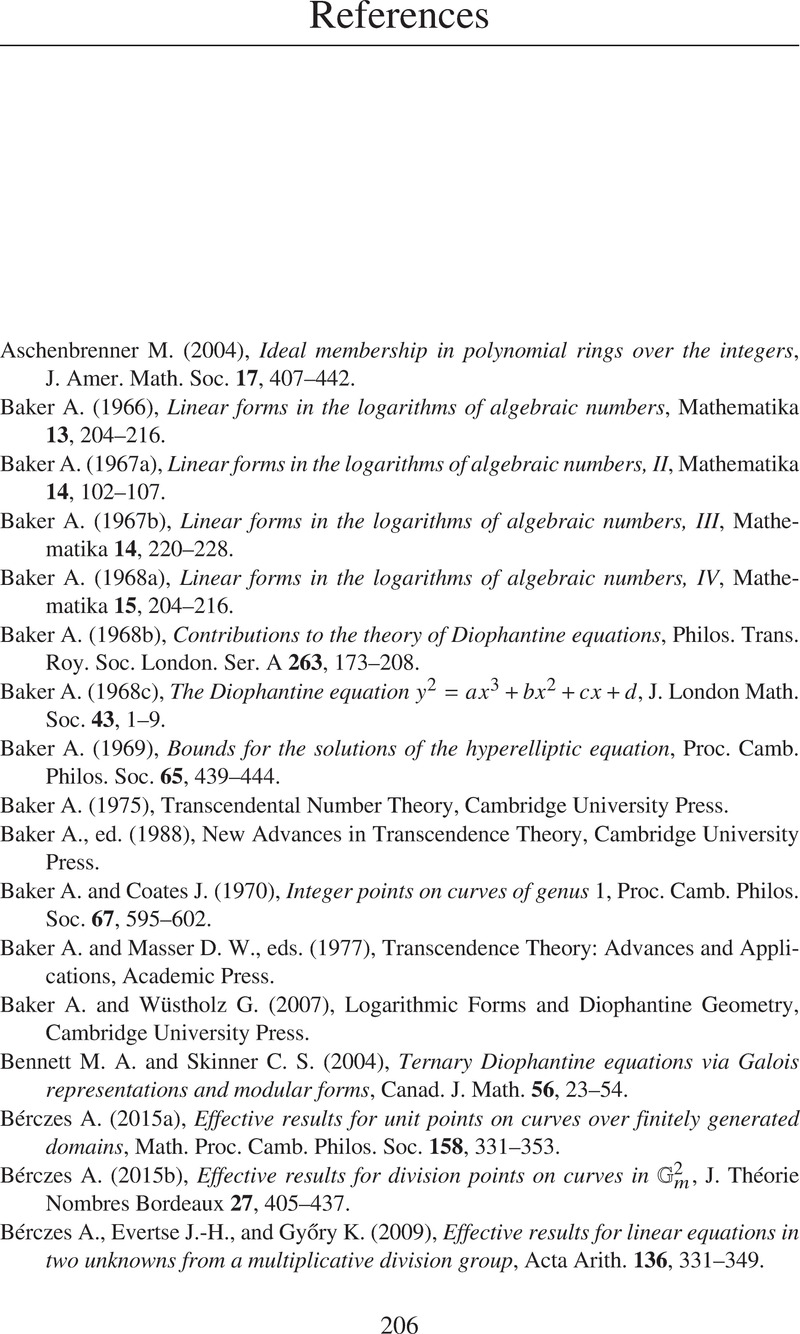Book contents
- Frontmatter
- Dedication
- Contents
- Preface
- Acknowledgments
- Glossary of Frequently Used Notation
- History and Summary
- 1 Ineffective Results for Diophantine Equations over Finitely Generated Domains
- 2 Effective Results for Diophantine Equations over Finitely Generated Domains: The Statements
- 3 A Brief Explanation of Our Effective Methods over Finitely Generated Domains
- 4 Effective Results over Number Fields
- 5 Effective Results over Function Fields
- 6 Tools from Effective Commutative Algebra
- 7 The Effective Specialization Method
- 8 Degree-Height Estimates
- 9 Proofs of the Results from Sections 2.2 to 2.5 Use of Specializations
- 10 Proofs of the Results from Sections 2.6 to 2.8 Reduction to Unit Equations
- References
- Index
- References
References
Published online by Cambridge University Press: 31 August 2022
- Frontmatter
- Dedication
- Contents
- Preface
- Acknowledgments
- Glossary of Frequently Used Notation
- History and Summary
- 1 Ineffective Results for Diophantine Equations over Finitely Generated Domains
- 2 Effective Results for Diophantine Equations over Finitely Generated Domains: The Statements
- 3 A Brief Explanation of Our Effective Methods over Finitely Generated Domains
- 4 Effective Results over Number Fields
- 5 Effective Results over Function Fields
- 6 Tools from Effective Commutative Algebra
- 7 The Effective Specialization Method
- 8 Degree-Height Estimates
- 9 Proofs of the Results from Sections 2.2 to 2.5 Use of Specializations
- 10 Proofs of the Results from Sections 2.6 to 2.8 Reduction to Unit Equations
- References
- Index
- References
Summary

- Type
- Chapter
- Information
- Effective Results and Methods for Diophantine Equations over Finitely Generated Domains , pp. 206 - 213Publisher: Cambridge University PressPrint publication year: 2022



